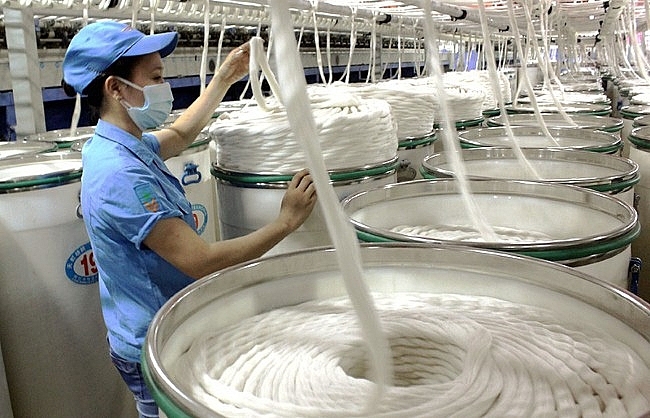The concern about Chinese investments were raised after the Ministry of Planning and Investment (MPI) released a report showing that China is standing firmly in the No 1 position on the list of leading foreign direct investors in Vietnam.

Chinese registered $1.3 billion worth of FDI in the first four months
In the first four months of 2019, Chinese investors registered $1.3 billion worth of FDI in 187 projects. The investments mostly were for the processing & manufacturing industry, real estate and distribution.
Recent reports all show increasingly high Chinese FDI in Vietnam. Experts began paying attention to the upward tendency in Chinese investments in 2016, when Chinese FDI climbed to $1.26 billion, accounting for 8.3 percent of total FDI capital to Vietnam.
Pham Pho, a respected economist, noted that Chinese mostly eye infrastructure projects and input material production.
|
It cannot expect technology transfer from Chinese investors because they mostly use outdated technology in Vietnam. The projects do not generate more jobs, because the investors bring workers from China to the project sites. |
They also are interested in textiles & garments, footwear, yarn, civil engineering, thermopower and mining, labor intensive industries which have a negative impact on the environment and can be exploited by Chinese to boost their exports to other countries.
In infrastructure development, Chinese capital has gone to Thai Nguyen Cast Iron & Steel, bauxite mining in the Central Highlands and the Cat Linh-Ha Dong elevated railway.
While appreciating the positive impact of FDI on the national economy, Pho said that a poor consequences remain unsolvable.
The Thai Nguyen Cast Iron & Steel project, with outdated technology, cannot operate, the bauxite mining project in the Central Highlands runs ineffectively and the elevated railway has become ‘famous’ because of an industrial accident.
An analyst, agreeing with Pho, said Vietnam has not had much benefit from Chinese invested projects.
It cannot expect technology transfer from Chinese investors because they mostly use outdated technology in Vietnam. The projects do not generate more jobs, because the investors bring workers from China to the project sites.
Meanwhile, the Chinese investors’ presence in the retail market has raised concern that low-quality and counterfeit goods will flood Vietnam and corner the market.
“These projects are a part of the China’s ‘one belt, one road’ strategy, under which Chinese is accelerating outward investments to export labor, capital and backward technologies to developing countries,” the analyst said.
Chinese havre recently poured capital into the real estate, consumer goods and retail sectors.
Analysts have repeatedly warned about Chinese presence in key real estate projects in Vietnam, located in important positions in coastal areas of Van Don, Nha Trang, Da Nang and Hai Phong.
“Remember that many countries in the world have refused Chinese capital for fear of long-term consequences,” Pho commented.
RELATED NEWS
Vietnam surpasses China in FDI prospects
China becomes Vietnam’s largest investor in Q1
Ha Dung
 Welcoming foreign investments, economists have once again warned about the negative impact that Chinese investments have had on Vietnam’s economy." itemprop="description" />
Welcoming foreign investments, economists have once again warned about the negative impact that Chinese investments have had on Vietnam’s economy." itemprop="description" />